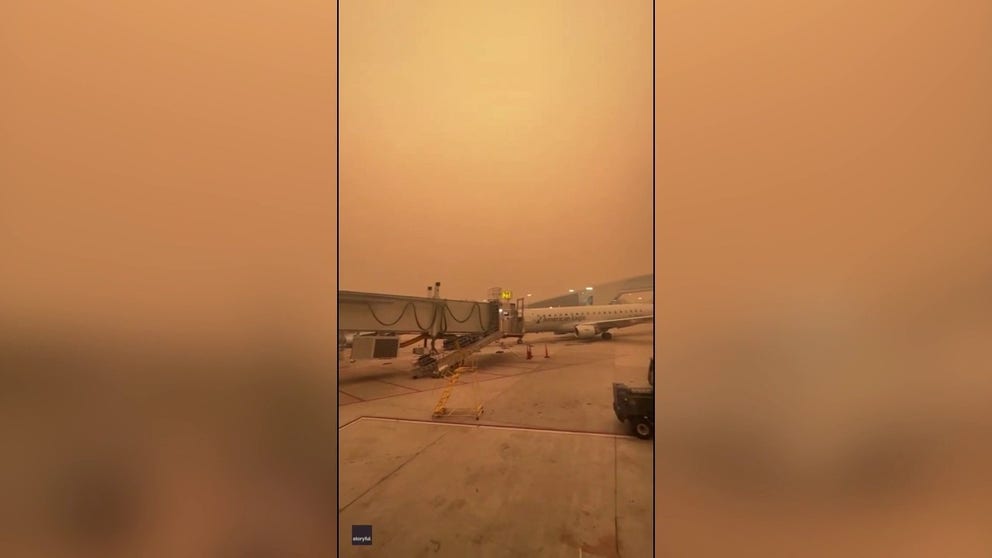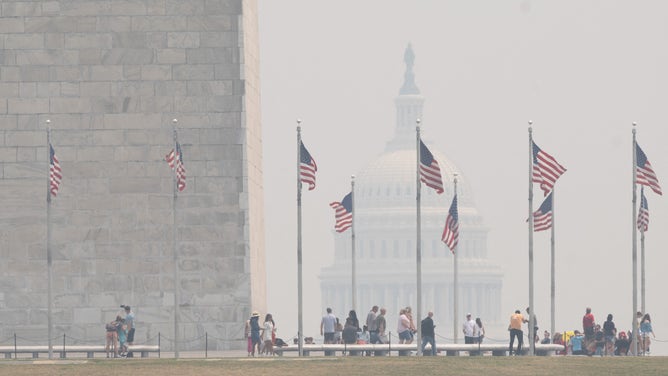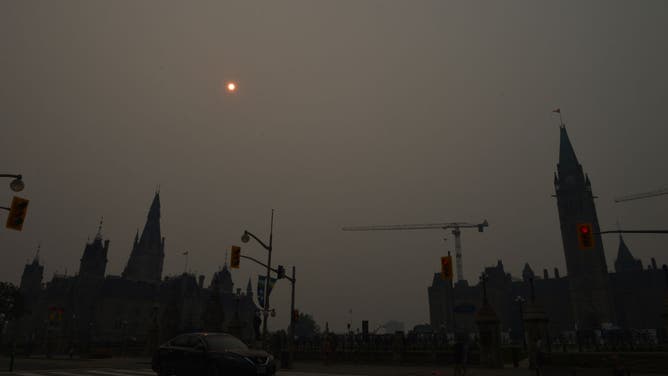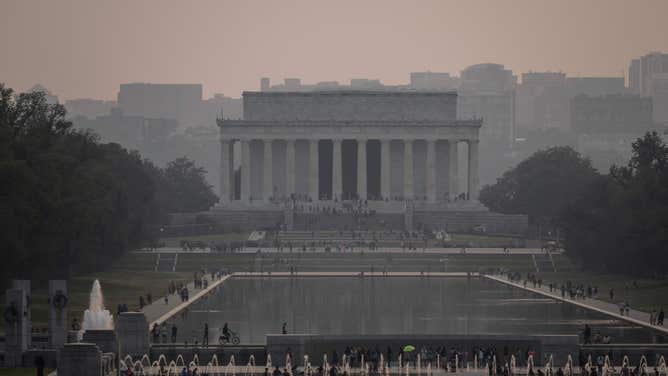Canadian wildfires already producing record carbon emissions as season enters peak
Early analysis of atmospheric data shows wildfire emissions produced 160 megatonnes of carbon emissions, the highest annual total since 2003, according to Europe’s Copernicus Atmosphere Monitoring Service.
Pilot shows reduced visibility at New York airport amid ongoing wildfire smoke crisis
A pilot who was due to fly out of New York’s LaGuardia Airport on June 7 recorded video showing the surreal orange haze encompassing the facility.
Canada’s wildfire season is entering its peak months and the blazes have already set new records across parts of the country for acres burned. Early analysis showed the fires have also set a record for the highest annual total for estimated emissions in the last 20 years.
Starting in western Canada before reaching every province, the wildfires have been fueled by dry and warm conditions. Wildfire activity began increasing in May and intensified throughout June, sending smoke down through the U.S. and creating some of the worst air quality on record in New York.
With more than 7.8 million hectares (19 million acres) and nearly 3,000 fires this season, the exact toll of the fires continues to mount.
The European Union’s Copernicus Atmosphere Monitoring Service, or CAMS, monitors air quality, emissions and other atmospheric data. On Tuesday, the group released its initial findings on the devastating Canadian wildfires sending smoke into the U.S. and as far away as Europe.
According to the group, the Canadian wildfires have released 160 megatonnes of carbon emissions, the highest annual total for Canada since CAMS started the Global Fire Assimilation System database 20 years ago.
WHERE IS THE CANADIAN WILDFIRE SMOKE HEADED NEXT?
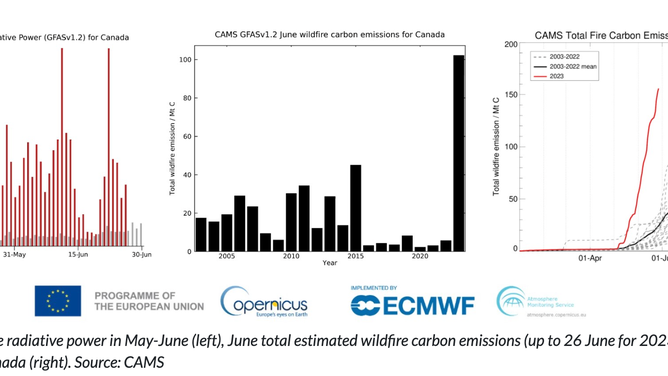
Daily total fire radiative power in May-June (left), June total estimated wildfire carbon emissions (up to 26 June for 2023) (left) and total wildfire carbon emissions for Canada (right). (Source: CAMS)
"Our monitoring of the scale and persistence of the wildfire emissions across Canada since early May has shown how unusual it has been when compared to the two decades of our dataset," CAMS Senior Scientist Mark Parrington said in a statement. "The long-range transport of smoke that we are currently monitoring is not unusual, and not expected to have any significant impact on surface air quality in Europe, but it is a clear reflection of the intensity of the fires that such high values of aerosol optical depth and other pollutants associated with the plume are so high as it reaches this side of the Atlantic."
CAMS data shows a majority of the carbon emissions came from the first three weeks in June, which was responsible for more than 100 megatonnes in carbon emissions.
The group said emissions were close to the mean at the start of the wildfire season but quickly overtook any previous year’s emissions on CAMS' records.
CAMS scientists also compared the intensity of the fires, known as fire radiative power, and which fires produce greater carbon emissions.
CAMS fire radiative power data for June shows the intensity of the Quebec wildfires was significantly higher than in the same period over the past 20 years.
In May and June, wildfire carbon emissions for Quebec were around 3.5 megatonnes, the highest since 2013 and are just an early estimate, according to CAMS. Meanwhile, carbon emissions from wildfires in Ontario are the highest since 2003.
The data also showed fire intensity has been greater than the mean of fires between 2003-2022 for the same period.
The Canadian wildfire season usually peaks in the summer and ends in September. Millions across the U.S. and Canada will continue to face more air quality alerts as hundreds of fires burn out of control.
